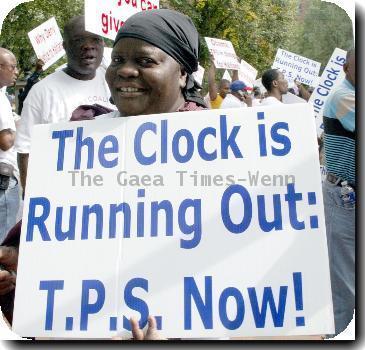Federal regulators shutter banks in Fla., Mo., NM, Ore., Wash., making 9 bank failures in 2010
By Marcy Gordon, APFriday, January 22, 2010
Banks shut in Fla., Mo., NM, Ore., Wash.
WASHINGTON — Regulators shut down banks Friday in Florida, Missouri, New Mexico, Oregon and Washington, bringing to nine the number of bank failures so far in 2010, following 140 closures last year in the toughest economic environment since the Great Depression.
The Federal Deposit Insurance Corp. took over the five banks: Charter Bank, based in Santa Fe, N.M., with $1.2 billion in assets and $851.5 million in deposits; Miami-based Premier American Bank, with $350.9 million in assets and $326.3 million in deposits; Bank of Leeton in Leeton, Mo., with $20.1 million in assets and $20.4 million in deposits; Columbia River Bank, based in The Dalles, Ore., with $1.1 billion in assets and $1 billion in deposits; and Seattle-based Evergreen Bank, with $488.5 million in assets and $439.4 million in deposits.
Beal Financial Corp., based in Plano, Texas, agreed to assume the deposits and assets of Charter Bank. In addition, the FDIC and Beal Financial agreed to share losses on $805.5 million of the failed bank’s loans and other assets.
Columbia State Bank, based in Tacoma, Wash., agreed to buy the deposits and assets of Columbia River Bank. The FDIC and Columbia State Bank agreed to share losses on $697.4 million of its loans and other assets.
Umpqua Bank, based in Roseburg, Ore., is assuming the deposits and assets of Evergreen Bank. The FDIC and Umpqua Bank agreed to share losses on $379.5 million of its loans and other assets.
“Evergreen’s capital has been depleted by large loan losses,” Brad Williamson, director of the banks division in Washington state’s Department of Financial Institutions, said in a statement. “Like many banks across the state and country, Evergreen’s real-estate construction and development portfolio has suffered tremendously as real estate values have fallen.”
The federal regulators used a novel procedure for Premier American Bank, employing the first so-called “shelf charter” to give preliminary approval to a group of investors to obtain a national bank charter before acquiring a specific troubled institution. The shelf charter was inactive until the acquisition was made.
A new bank with a national charter was set up, to be called Premier American Bank N.A., to assume the deposits and assets of the failed bank. The investment firm Bond Street Holdings LLC got preliminary approval with a shelf charter on Oct. 23, and final approval was granted Friday by the U.S. Office of the Comptroller of the Currency, which regulates national banks.
Also, the FDIC and the new bank agreed to share losses on $300 million of Premier American’s loans and other assets.
Sunflower Bank, based in Salina, Kan., agreed to assume the deposits of Bank of Leeton. The FDIC will retain most of its assets for later sale.
The failure of Charter Bank is expected to cost the deposit insurance fund $201.9 million; that of Columbia River Bank is expected to cost $172.5 million; Premier American Bank, $85 million; Evergreen Bank, $64.2 million; Bank of Leeton, $8.1 million.
As the economy has soured, with unemployment rising, home prices tumbling and loan defaults soaring, bank failures have accelerated and sapped billions out of the federal deposit insurance fund. It fell into the red last year.
The 140 bank failures last year were the highest annual tally since 1992, at the height of the savings and loan crisis. They cost the insurance fund more than $30 billion. The failures compare with 25 in 2008 and three in 2007.
The number of bank failures is expected to rise further this year. The FDIC expects the cost of resolving failed banks to grow to about $100 billion over the next four years.
The agency last year mandated banks to prepay about $45 billion in premiums, for 2010 through 2012, to replenish the insurance fund.
Depositors’ money — insured up to $250,000 per account — is not at risk, with the FDIC backed by the government. Besides the fund, the FDIC has about $21 billion in cash available in reserve to cover losses at failed banks.
Banks have been especially hurt by failed real estate loans, both residential and commercial. Banks that had lent to seemingly solid businesses are suffering losses as buildings sit vacant. As development projects collapse, builders are defaulting on their loans.
If the economic recovery falters, defaults on the high-risk loans could spike. Many regional banks hold large concentrations of these loans. Nearly $500 billion in commercial real estate loans are expected to come due annually over the next few years.
This week, President Barack Obama called for limits on the size and investments of big Wall Street banks to help stave off a fresh economic meltdown. Obama’s proposal, which would need Congress’ approval to take effect, includes barring banks that take deposits from also trading securities for their own profit. It also would separate commercial banks from investment banks, a line that was blurred a decade ago by legislation reversing Depression-era restraints.
Tags: Barack Obama, Florida, Government Regulations, Industry Regulation, International Agreements, Missouri, New Mexico, North America, Recessions And Depressions, Santa Fe, Swashington, United States, Washington

